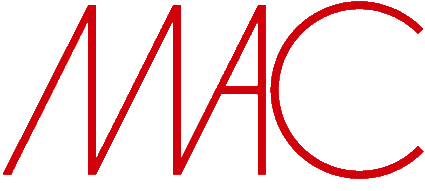Flieg Photographer. Industry, design, advertising, architecture and the arts in Hans Gunter Flieg's photographic work.
Photographs of the Instituto Moreira Salles collection
Born in 1923 in Chemnitz, Germany, Hans Gunter Flieg migrated to São Paulo in 1939 with his parents and brother. They left behind a country whose government had unveiled its darkest side with the Crystal Night, in November 1938, when businesses and homes belonging to Jewish families, such as Flieg's, were violently attacked by National-Socialism partisans. It was one of a series of escalating events that later culminated in the invasion of Poland in September 1939, heralding the beginning of World War II. When Flieg arrived in Brazil, he had with him a Leica and a Linhof cameras, as well as books on photography and copies of Life magazine, one of his sources of inspiration. Between 1940 and 1945, he worked as an intern in São Paulo, first with photographers Peter Scheier and Irene Lenthe, and later in Ypiranga and Niccolini printing companies.
In 1945, Flieg became a professional photographer working in the fields of industry, advertising and architecture. For 40 years he recorded the industrial development of Brazil and documented the country's design, architecture and advertising from 1940 and 1980. He photographed industrial sites, buildings and objects that representative of the period. Within this universe, there are, for instance, images of industrial sites of companies such as Willys-Overland, Mercedes Benz and Marcas Famosas S/A, automotive industry pioneers in Brazil. In addition, he took images of stalls of large companies at national fairs, such as Clark Shoe factory's at the 400th Anniversary of São Paulo Exhibition (Ibirapuera Park, São Paulo, 1954); and Mercedes-Benz of Brazil's stall in the International Industry and Commerce Fair (São Cristóvão Pavillion, Rio de Janeiro, 1961), both projects by architect Henri Maluf. In 1947, he photographed for Cristais Prado Industrys catalogue and in the following year he produced the 1949 Pirelli annual picture calendar.
As well as working for the industry, Flieg photographed for major advertising companies, such as Standard and Thompson. He also participated in the 1st National Advertising Salon, held at the Museum of Art of São Paulo (MASP) in 1950. In 1951, he was the official photographer of the 1rst Biennial of São Paulo, organized by the Museum of Modern Art of São Paulo (MAM), and began to permanently document the art scene of the city of São Paulo.
Flieg's work developed under the strong influence of European modernity, combining expertise in the formal production of the photographic image and an absolute control of light, exposure and film processing. His extremely refined images, which were mostly produced under commission, especially those taken in the context of industrial photography and industrial products, lead us to an imagetic universe that has been named the “ecstasy of things”. In this universe, photography becomes the tool par excellence for the record and visualization of industrial society's objects and for their subsequent trade and circulation by means of the new tools of advertising, which widely adopted photography in its pieces chiefly from the 1950s onwards.
In this sense, Flieg's photography is related to the German school of New Objectivity (Neue Sachlichkeit), which geared towards the direct photographic record of natural and industrialized objects, as proposed by Albert Renger-Patzsch in his famous publication Die Welt ist schön [The World is Beautiful], as well as towards the documentation of industrial space, its facilities and equipment. It is also related to elements of a more conceptual and critical objectivity, like the serial documentation project of the constructive and architectural elements of an industrial society already in its entropic cycle, mainly represented by the works of the German couple Bernd and Hilla Becher, in the post-war period. Their work features the ambivalence of photographic objectivity itself, which began to be addressed in its post-modern critical sense. This is what ultimately sets the images free from their original context and enables formal and poetic readings of the recorded objects and equipment that transcend their referential and documentary dimension. Likewise, Flieg, in many cases, creates images that contain a strong abstract and formal vocation, expanding and updating the relevance of his production in the field of modern and contemporary photography in Brazil.
The entire photographic production of Hans Gunter Flieg comprises more than 35 thousand negatives and photographs, also containing photographic records ranging from the time he was in Germany to the mid 1980s. One of the most comprehensive shows of his oeuvre was the retrospective Hans Gunter Flieg: 40 years of photography, held at the Museum of Sound and Image (MIS), in São Paulo, in 1981. In July 2006, his work was added to the Instituto Moreira Salles' collection and it has remained there since then, available and open for research on its important documentary and aesthetic aspects. The critical and in-depth study of his photographic collection is an effective contribution to the understanding of structures that form contemporary society, concerning the direct and objective documentation of material culture as well as a more abstract dimension of the symbolic and creative representation of these same structures.
The present exhibition was first held at the Instituto Moreira Salles of Rio de Janeiro in 2010 and now is presented at MAC - USP, accompanied by the launch of the book Flieg. Indústria, arquitetura e arte na obra fotográfica de Hans Gunter Flieg, the first extensive publication on Flieg's work edited in Brazil.
Sergio Burgi
Photography Department Coordinator
Instituto Moreira Salles
© 2014 Museu de Arte Contemporânea da Universidade de São Paulo

